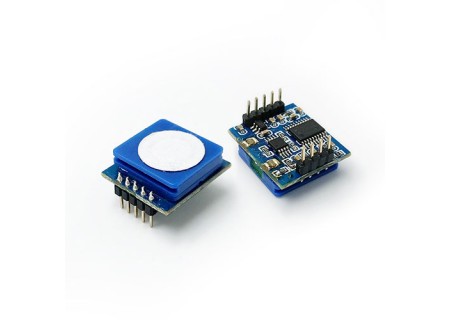Instrument to check air quality
-500x500.jpg)
Today, as people's awareness of quality of life and health increases, the need for air quality monitoring becomes more and more urgent. Air pollution has a huge impact on both human health and the environment, making it critical to understand and monitor air quality. Modern technology has developed various instruments and equipment to detect and monitor air quality. Here are some common instruments to check air quality to help you understand how to accurately assess and monitor air quality to protect our health.
Air quality monitoring station
Air quality monitoring stations are professional equipment used to monitor air quality in large areas. These monitoring stations are usually set up by governments or environmental protection agencies to monitor and collect data on various pollutants, such as PM2.5, PM10, ozone, sulfur dioxide, etc.
Air quality monitoring stations are usually equipped with high-precision sensors and instruments that can measure and record the concentration of various pollutants in the air in real time. The collected data will be transmitted to a central database through the network for query and analysis by relevant departments and the public. Data from these monitoring stations play an important role in formulating environmental policies, regulating industrial emissions and alerting the public to changes in air quality.
PM2.5 air quality monitor
PM2.5 gas sensor is one of the most common instruments to check air quality. PM2.5 refers to atmospheric particulate matter with a diameter of less than or equal to 2.5 microns. They can be suspended in the air and inhaled into the lungs by the human body, causing harm to health. The PM2.5 sensor detects the concentration of particulate matter in the air through the principle of laser scattering, thereby helping people understand the air quality of the surrounding environment.
Combustible gas detection
Combustible Gas Sensor is mainly used to detect the concentration of combustible gases in the air, such as methane, propane, etc. They detect the presence of gas through the principle of electrochemistry or infrared absorption and sound an alarm to remind people to take measures to avoid dangers such as fire or explosion.
VOCs detection equipment
VOCs (volatile organic compounds) are a common type of air pollutants, such as formaldehyde, benzene, xylene, etc. In order to detect and measure the concentration of VOCs in indoor air, special VOCs detection instruments are widely used.
The VOCs detection instrument uses TVOC Sensor technology to measure the concentration of VOCs efficiently and accurately. These instruments usually have high sensitivity and response speed, and can help users monitor and control VOCs pollution in indoor environments, thereby protecting health and improving quality of life.
Air Quality Monitor usually integrates a variety of sensors, which can detect PM2.5, formaldehyde, temperature, humidity and other parameters in the air, and transmit the data to the user's mobile phone in real time through mobile apps and other methods to help users monitor indoor air quality. and take appropriate measures to improve air quality.








-450x320.jpg)

-450x320.jpg)
